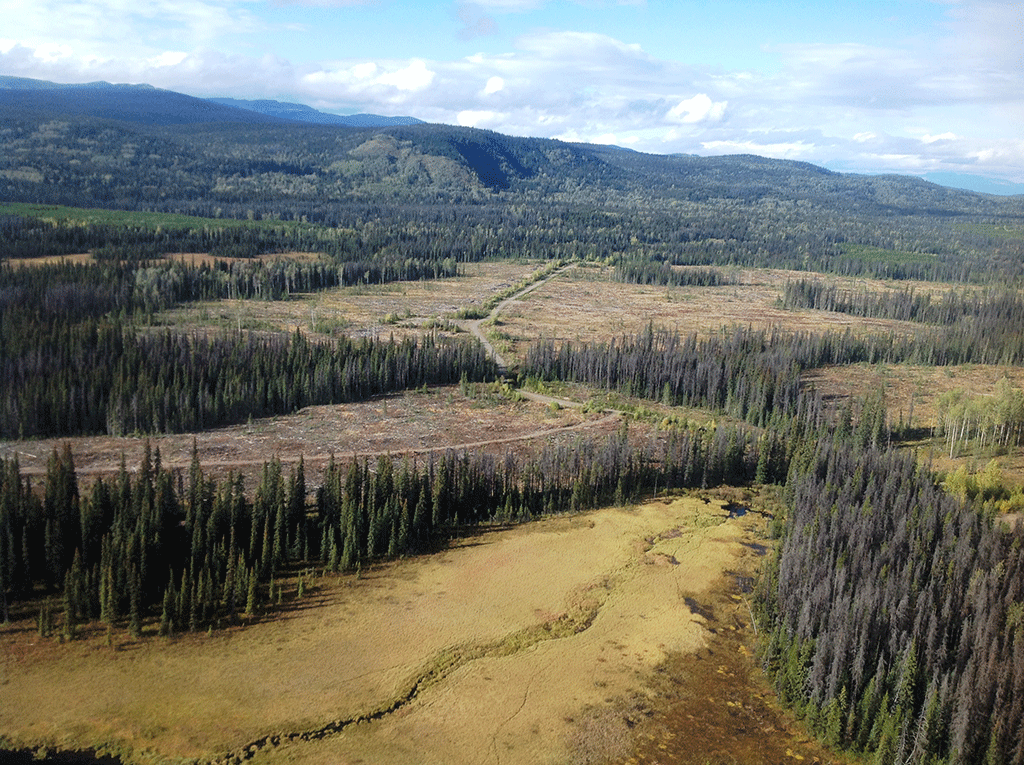
Our Work and Indigenous Communities
A look at Forest Practices Board work and its relevance to Indigenous Peoples

Introduction

A lithic site reserve near Fort St. James.
Indigenous Peoples in BC have lived, stewarded and relied on the land since time immemorial. For Indigenous Peoples, the lands, waters, plants and animals have significant cultural, traditional and spiritual importance. The Forest Practices Board acknowledges and respects the many First Nations territories we work within. We wish to expand our knowledge and learn from Indigenous Peoples.
This StoryMap shares how we have worked with Indigenous Peoples in the past. We hope it inspires ideas for future engagement and cooperative work.
Explore the First Peoples' Map of BC for an interactive map of the many Indigenous territories throughout BC.
The Forest Practices Board
The Forest Practices Board (The Board) is the public’s independent watchdog for sound forest and range practices in British Columbia, providing oversight of government and industry practices. The Board operates independently from government ministries, the forest and range industries, and environmental groups.
A Monumental Tree on Haida Gwaii.
How is the Board independent?
The Board is funded by the Province, but has its own budget, separate from any ministry. Regardless of who’s on the Board, or who’s being audited or investigated, our conclusions are defined by the standard that all forest and range operators must meet: the Forest and Range Practices Act (FRPA) and the Wildfire Act. We report our findings to the public and to government. Our reports show our independence, recommending improvements to BC government policies and legislation, and industry practices.
What does the Board do?
Auditors inspect a decommissioned bridge during the 2001-2005 Nisga'a Audits.
Work we must do
- Conduct audits of forest and range practices on public lands to assess compliance with FRPA and the Wildfire Act and the appropriateness of government enforcement of the Acts
- Investigate public complaints regarding compliance with FRPA and the Wildfire Act and appropriateness of government enforcement
- Indigenous licensees, individuals, and organizations can be the subjects of audits and complaint investigations and can also make complaints to the Board
Auditors observe reforestation of Interior Douglas fir during a 2018 Special Investigation.
Work we may do
- Conduct special investigations to address forestry-related matters that are of interest to the public
- Issue special reports to comment publicly on matters generally related to the work of the Board
- Recommend improvements to operations, planning, legislation, and policy
- Participate in appeals to the Forest Appeals Commission, to represent the public interest in matters under consideration
A culturally sensitive site protected by a no machine zone buffer.
Work we cannot do
- Address Indigenous rights or title issues
- Assess forest or range practices on private land (except private land within woodlots and tree farm licences)
- Issue fines or penalties, or direct companies to comply or stop work
- Judge adequacy of land use plans
Working in Indigenous Territory
Click on the various cases on the left or their icons on the map to learn more about each Board project.

Canim Lake Band
Canim Lake Band. Click to expand.
Compliance Audit (2014)

McLeod Lake Indian Band
McLeod Lake Indian Band. Click to expand.
Compliance Audit (2018)

Saik'uz First Nation
Saik'uz First Nation. Click to expand.
Full-scope Compliance Audit (2019)

Nisga'a Nation
Nisga'a Nation. Click to expand.
Compliance Audits (2001-2009)

Toquaht Nation
Toquaht Nation. Click to expand.
Complaint Investigation (2007)

Haida Nation
Haida Nation. Click to expand.
Complaint Investigation (2014)

Lhtako Dene Nation
Lhtako Dene Nation. Click to expand.
Complaint Investigation (2019)

Tactical Forest Planning
Tactical Forest Planning. Click to expand.
Special Report (2019)

Cumulative Effects
Cumulative Effects . Click to expand.
Special Report (2011)

Heiltsuk Nation
Heiltsuk Nation. Click to expand.
Information Sharing Opportunity (2012)

Haida Nation Workshop
Haida Nation Workshop. Click to expand.
Training Opportunity (2014)
Looking Ahead
A culturally modified tree in BC's interior.
Engaging with Indigenous Peoples continues to be a priority for us. This story highlights just a few ways the Board has engaged with First Nations across the province through our work. We hope it inspires new opportunities to build relationships and work together.
The Board also intends to incorporate Indigenous knowledge into future project work.
The Board is committed to strengthening its relationships with Indigenous Peoples. We encourage anyone interested to contact us to learn more about our work and how we can assist Indigenous Peoples, and to explore opportunities to collaborate in the future.
Learn More
Thank you for taking the time to learn about the Board's work with Indigenous Peoples in communities across the province. Please see the links below for information on contacting us and filing a concern, or to read our reports.